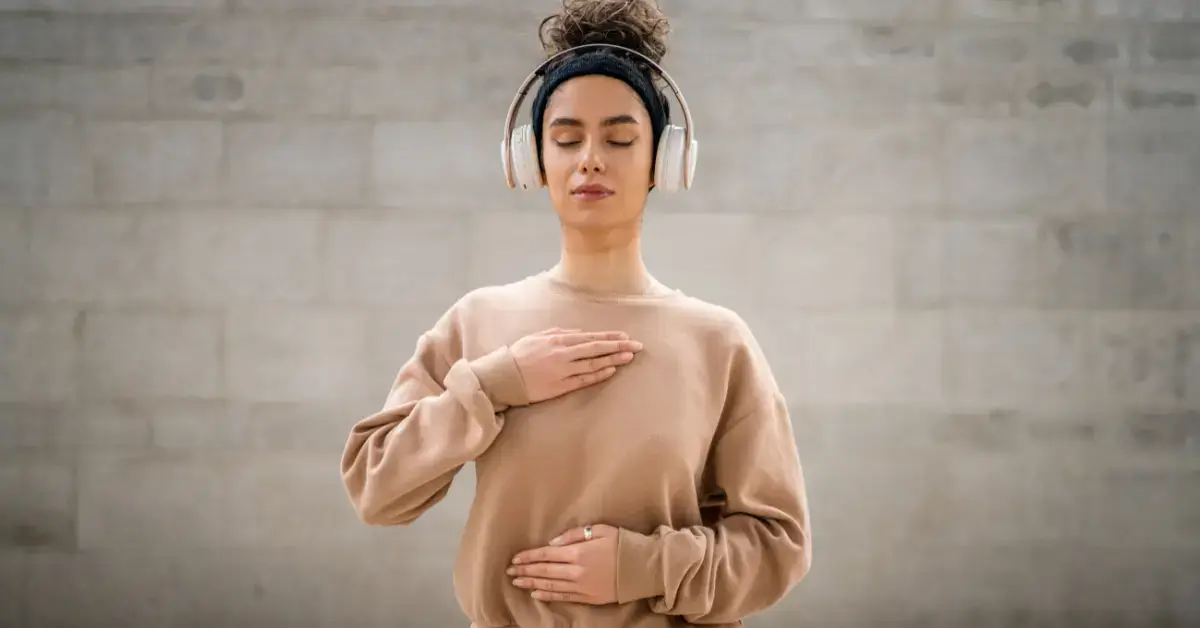Embark on a journey of inner peace and mindfulness with our curated selection of guided meditation sessions. Whether you’re new to meditation or seeking to deepen your practice, these guided sessions offer expert guidance and soothing narration to help you relax, focus, and rejuvenate your mind, body, and soul.
Understanding Guided Meditation
When I approach the subject of guided meditation, I consider it a journey through the inner workings of the mind with a companion, someone to help navigate the otherwise solitary experience. It’s a practice that seeks to cultivate awareness, focus, and a plethora of personal benefits by direct engagement with the mind and body through skilled instruction.
Basics of Guided Meditation

Guided meditation is a practice where an individual follows the verbal cues of an instructor to enter a state of deep relaxation and mindfulness. It often starts by finding a comfortable position and involves a sequence of relaxation techniques, where the guide’s instructions lead you to focus on various aspects such as the breath, body, and emotions. The aim is to bring you to the present moment, creating a space for awareness to flourish without the clutter of distracting thoughts.
Benefits of Guided Meditation
The benefits of engaging in regular guided meditation are far-reaching. It has been shown to alleviate stress, enhance sleep quality, and ease anxiety. It can also bolster one’s sense of well-being and promote relaxation and resilience. Additionally, for those struggling with depression, it can offer a way to manage symptoms with more compassion towards oneself.
- Stress Reduction: Alleviates the physical and emotional effects of stress.
- Enhanced Sleep: Facilitates a more restful and deeper sleep.
- Lowered Anxiety Levels: Helps reduce the frequency and intensity of anxious thoughts.
- Improved Well-being: Encourages a stronger sense of inner peace and happiness.
Types of Guided Meditation
Different forms of guided meditation cater to varying personal needs and preferences:
- Mindfulness Meditation: Emphasizes present moment awareness and acceptance.
- Loving-Kindness Meditation: Focuses on cultivating compassion towards oneself and others.
- Body Scan Meditation: Involves a mental sweep through the body, paying attention to areas of tension and relaxation.
Each type uses different techniques to guide you towards a particular mental state, whether it’s cultivating a deep sense of compassion or heightening awareness of the immediate experience.
Implementing Guided Meditation

When I introduce guided meditation to others, I focus on making it an effective and supportive practice. It’s about fostering the energy of presence and patience, whether you’re a beginner or seasoned in the journey of mindfulness.
Getting Started
To start guided meditation, I find a quiet moment, ensuring the environment is conducive to calm and silence. It’s important for beginners, especially, to find a space that minimizes distractions. I typically advise using resources from platforms such as Headspace or iTunes where you can find an array of guided meditations catering to different needs.
- Choose the right space: Quiet, comfortable, and free from interruption.
- Select a guided meditation: From apps or online platforms.
- Settle into a comfortable posture: Seated or lying down.
Guided Meditation Techniques
In my practice, I use a variety of techniques to engage my attention and breath, which are pivotal to mindfulness. Listening is key, whether to instructions or to the music that accompanies some sessions. I will also introduce breathwork and visualization to help maintain presence.
- Focus on breath: Deep, rhythmic breaths to anchor attention.
- Visualizations: Imagery to guide the journey and support change.
- Tara Brach’s sessions are a gold standard for integrating complex techniques with ease.
Overcoming Challenges
Challenges such as restlessness or wandering thoughts often arise. I’ve learned patience and come to value the quiet moments that follow overcoming these obstacles. It’s crucial to acknowledge challenges without judgment and gently redirect focus to the breath or guide’s voice.
- Acknowledge distractions: Recognize and accept without frustration.
- Return to the guide’s voice: Let it be the anchor amidst distractions.
- Employ patience as support: Transformation occurs over time, not instantly.
Guided Meditation Resources
The resources I depend on are often free or supported by donations, making guided meditation accessible to many. I frequently visit platforms that offer a variety of guided sessions to suit whatever mood or need arises, ensuring there’s always support on my journey.
- Mindfulness apps: Headspace, Insight Timer, and Calm offer varied content.
- Listen to podcast meditations: For on-the-go practice.
- Music for meditation: Enhances the experience and helps in maintaining presence.
Guided meditation is a supportive tool in my personal development toolbox, helping me to cultivate calm, energy, and a mindful presence in my daily life.
Integrating Meditation into Daily Life

Incorporating meditation into your routine can transform how you engage with the world, offering a sense of calm and focus throughout your day. Whether through specialized practices or simple moments of mindfulness, the benefits extend far beyond the time spent in silence.
Meditation and Lifestyle
I recognize that my lifestyle sets the rhythm for my guided meditation practice. Integrating meditation isn’t about carving out hours of silence; it’s about finding moments within my daily life to invite calm and presence. Simple practices like starting my day with a five-minute guided meditation can set a positive tone, and using brief moments of pause, such as during a lunch break or while waiting in line, to refocus my attention can be powerful. I find that this helps me maintain a connection to the present moment and cultivates an underlying energy that carries me throughout the day.
Mindfulness Beyond Meditation
For me, mindfulness is not limited to the time I spend on my cushion; it encompasses how I approach each aspect of my life. I strive to maintain awareness in everyday activities like walking or eating, which turns these actions into meditative practices in their own right. I also practice mindfulness by paying attention with kindness and compassion, listening attentively to others, and observing my surroundings with fresh eyes. This leads to a more profound sense of presence, allowing me to savor each moment as it unfolds.
Specialized Practices
There are various specialized practices I incorporate to deepen my meditation journey. Yoga, for example, is a form of moving meditation that aligns my body and mind, enhancing my focus and releasing tension. Before bedtime, I engage in a guided meditation designed for sleep, which prepares me for a restful night by soothing my mind and easing any lingering pain or discomfort. By integrating these specialized practices, I nurture a holistic sense of well-being that supports my overall meditation practice.
FAQ – Guided Meditation

Is guided meditation as effective?
Guided meditation can be incredibly effective, especially for beginners. Studies suggest that guided meditation can help with stress, anxiety, and sleep issues. The guidance can enhance physical and mental well-being by providing a structured experience for users. For more details on the effectiveness of guided meditation, please see the outcomes listed on Forbes Health.
Is it OK to fall asleep during guided meditation?
Yes, it’s perfectly okay to fall asleep during guided meditation. This can indicate a state of deep relaxation and can be beneficial, particularly if you are using meditation to help with sleep problems. However, the goal of meditation is often to remain awake and aware, so falling asleep might mean adjusting the time of day you meditate or your position to ensure alertness.
How long should a guided meditation last?
The duration of a guided meditation can vary based on personal preference and experience level. Beginners might start with shorter sessions, around 5 to 10 minutes, and gradually increase as they become more comfortable with the practice. Ultimately, the length of a guided meditation should be long enough to allow you to feel a sense of relaxation and rejuvenation. For guidance on setting a time limit for your practice, visit Mindful’s guidelines.
If you liked this blog post about the topic: Guided Meditation, don’t forget to leave me a comment down below to tell me about your experience with it. Or have a look at my other articles:
- 20+ Meditation Art You Will Absolutely Adore 2024
- Is Meditation a Sin? Unpacking Spiritual Concerns
- Abraham Hicks Meditation: The Power of the Vortex
- Hindu Meditation: Embracing Serenity and Spiritual Growth
- 20+ Meditation Tattoo 2024: Surprising Inspirations
Feel free to also check out our other Articles from the category “Meditation“ and don’t forget to follow us on Pinterest.


